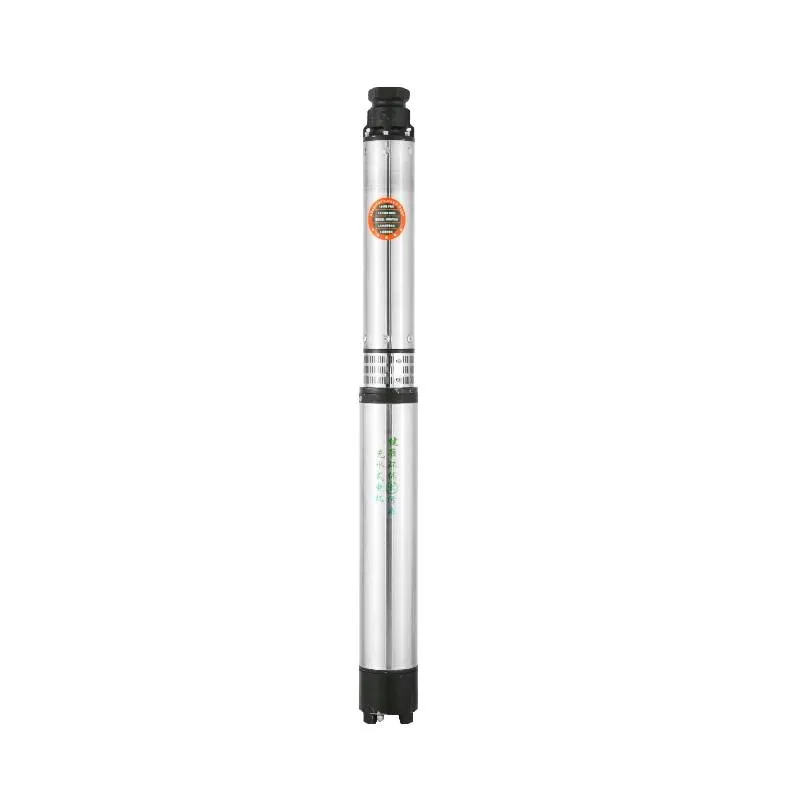Aug . 12, 2024 12:06 Back to list
Factors Influencing the Installation Costs of Submersible Pumps in Various Applications
The Costs of Submersible Pump Installation A Comprehensive Overview
Submersible pumps are widely used in various applications, including residential, agricultural, and industrial settings. They are designed to be submerged in fluids and work efficiently for tasks such as groundwater extraction, wastewater management, and irrigation. One crucial aspect of utilizing submersible pumps is understanding the installation costs associated with them. This article breaks down the factors that influence the installation costs of submersible pumps, providing a comprehensive overview.
Understanding Submersible Pumps
Before delving into the costs, it's essential to grasp what submersible pumps are and their functionality. These pumps are hermetically sealed and can operate underwater, making them ideal for applications requiring fluid lifting from deep underground sources. Their design enables them to eliminate the need for priming, offering enhanced efficiency and reducing energy consumption.
Factors Influencing Installation Costs
1. Type of Pump The type of submersible pump required can significantly affect installation costs. Simple pumps for residential use may cost less than specialized pumps for industrial applications. The head, flow rate, and specific features like variable speed control contribute to variations in price.
2. Depth and Diameter of the Well The depth of the well significantly impacts the total installation cost. Deeper wells require longer and more robust pump systems, which can raise costs substantially. Similarly, the diameter of the well affects the type of pump that can be installed and any associated infrastructure.
3. Labor Costs Installation costs are heavily influenced by labor expenses, which can vary by region and the complexity of the installation process. Skilled laborers are necessary for tasks such as electrical connections, fitting, and ensuring the pump operates correctly. Regions with higher living costs usually reflect higher labor charges.
submersible pump installation cost

4. Additional Infrastructure Installing a submersible pump often involves additional infrastructure such as electrical wiring, piping, and a control panel. If these components need to be installed or upgraded, they can add significantly to the total cost.
5. Permits and Regulations Local and state regulations may require permits for pump installation. The costs associated with obtaining these permits can vary widely depending on the jurisdiction. Moreover, compliance with regulations often necessitates additional safety measures or modifications, increasing overall costs.
6. Maintenance and Warranty While not a direct installation cost, considering long-term maintenance options and warranty agreements is essential. Investing in a pump with a good warranty can save money in the long run, while maintenance costs must also be factored into the overall budget.
Average Cost Estimates
Generally, the installation of a submersible pump can range from $1,000 to $5,000 or more, depending on the factors mentioned above. Simple residential installations might fall on the lower end of this range, whereas commercial and complex applications can lead to much higher costs.
Conclusion
Installing a submersible pump is a significant investment that requires careful consideration of various factors. Understanding the influences on installation costs—such as the type of pump, depth of the well, labor charges, additional infrastructure, permits, and maintenance—can help homeowners and businesses make informed decisions. By budgeting appropriately and choosing the right equipment and expertise, users can ensure that their submersible pump installations are both effective and cost-efficient in the long run.
-
Submersible Water Pump: The Efficient 'Power Pioneer' of the Underwater World
NewsJul.01,2025
-
Submersible Pond Pump: The Hidden Guardian of Water Landscape Ecology
NewsJul.01,2025
-
Stainless Well Pump: A Reliable and Durable Pumping Main Force
NewsJul.01,2025
-
Stainless Steel Submersible Pump: An Efficient and Versatile Tool for Underwater Operations
NewsJul.01,2025
-
Deep Well Submersible Pump: An Efficient 'Sucker' of Groundwater Sources
NewsJul.01,2025
-
Deep Water Well Pump: An Efficient 'Sucker' of Groundwater Sources
NewsJul.01,2025
-
 Submersible Water Pump: The Efficient 'Power Pioneer' of the Underwater WorldIn the field of hydraulic equipment, the Submersible Water Pump has become the core equipment for underwater operations and water resource transportation due to its unique design and excellent performance.Detail
Submersible Water Pump: The Efficient 'Power Pioneer' of the Underwater WorldIn the field of hydraulic equipment, the Submersible Water Pump has become the core equipment for underwater operations and water resource transportation due to its unique design and excellent performance.Detail -
 Submersible Pond Pump: The Hidden Guardian of Water Landscape EcologyIn courtyard landscapes, ecological ponds, and even small-scale water conservancy projects, there is a silent yet indispensable equipment - the Submersible Pond Pump.Detail
Submersible Pond Pump: The Hidden Guardian of Water Landscape EcologyIn courtyard landscapes, ecological ponds, and even small-scale water conservancy projects, there is a silent yet indispensable equipment - the Submersible Pond Pump.Detail -
 Stainless Well Pump: A Reliable and Durable Pumping Main ForceIn the field of water resource transportation, Stainless Well Pump has become the core equipment for various pumping scenarios with its excellent performance and reliable quality.Detail
Stainless Well Pump: A Reliable and Durable Pumping Main ForceIn the field of water resource transportation, Stainless Well Pump has become the core equipment for various pumping scenarios with its excellent performance and reliable quality.Detail
